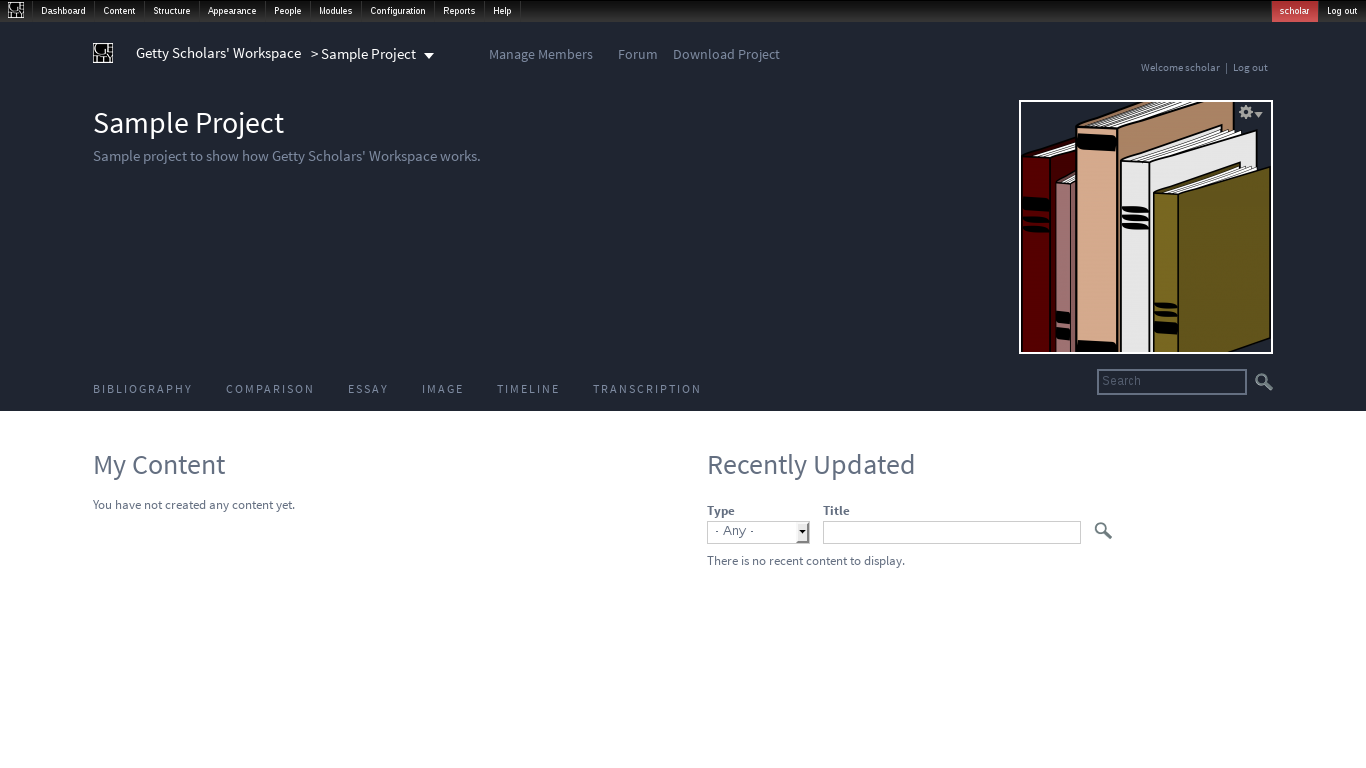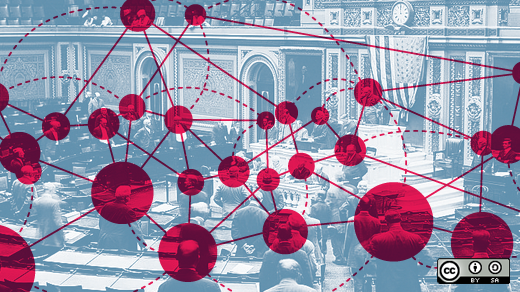Collaborating on scholarly research projects can sometimes become complicated and disorganized. For example, using Flickr for sharing and commenting on images while communicating via email and editing documents together in Google Docs works, but it places information about the research in way too many places.
Built on Drupal, the Getty Research Institute's Getty Scholars' Workspace provides a platform for art historians, and researchers in similar fields, to work collaboratively on multiple projects without having to use several different platforms.

Because Getty Scholars' Workspace is a Drupal distribution, its basic functionality should be familiar to anyone who has worked with any Drupal-based site before. Getty Scholars' Workspace provides some nice customizations, but does not do anything too radical.
On the administrative side, there are plenty of Scholars' Workspace specific options, but they integrate well with the other installed Drupal modules. On the front end, Getty Scholars' Workshop customizes the user interface so that the tools for creating and managing projects are easily accessible. Users with proper permissions can easily create new projects and add contributions in a manner that works much like one would expect from Drupal.
How it works
Each project is made up of six main, easy-to-use tools: Bibliography, Comparison, Essay, Image, Timeline, and Transcription.
Creating a bibliography can be done by entering information about an individual item or by importing records from a Zotero RDF file. The image tool is for uploading individual images and creating galleries of images, while the comparison tool functions as a virtual light table, allowing scholars to compare and contrast selected images from the project. The transcription tool helps scholars work with a facsimile of a textual object, such as a page from a manuscript, and create transcriptions and translations of the text. The essay tool lets scholars draft textual findings related to the project including citations for images and items in the project's bibliography. Finally, the timeline tool can construct a visual timeline of events related to the project, but it is limited to A.D. dates only.
Scholars taking advantage of Getty Scholars' Workspace can communicate with their co-researchers from inside the Scholars' Workspace installation. The platform provides forums for discussing projects and the ability to comment directly on most of the individual aspects of a project. The Getty Scholars' Workspace's documentation even suggests having all communication about the project take place in Scholars' Workspace so that all the discussion about the project is stored in one location.
The documentation for Getty Scholars' Workspace is already very polished and contains all the essential information needed to get started. There is an installation guide (PDF) for system administrators explaining how to install and configure Scholars' Workspace by cloning the project's GitHub repository and building the Drupal installation using Drush. The documentation for end users provides a broad overview of how to use the platform and provides some suggested best practices.
Drawbacks
Because it's based on Drupal, Getty Scholars' Workspace requires some technical know-how to install and configure. This is not very difficult, but it is harder than just signing up for an account with Flickr, Google, or the like. In order to fully function as a multi-user collaborative environment, it does need to be installed on a server. However, users who just want to try it out can install it on a local virtual machine or use the Docker image. It should be noted that the Docker image still has php.ini's upload_max_filesize set to the default 2MB, making it sub-optimal for real world usage without making further changes to the image (which the developers recommend anyway, for other reasons).
Check it out
Any art historians looking for a platform for collaboration should try out Getty Scholars' Workspace. It provides a great, well integrated set of tools for working on projects. Thanks to its Drupal base and some settings from the Scholars' Workspace specific modules, there are multiple types of users with different levels of access giving researchers control over how much users of different account types can do. That level of control is not always available with the piecemeal solution of using multiple platforms, and even if it is on an individual component, it is almost impossible to sync permissions between them.
It might be easier to get started with a hodgepodge of free online services, but the centralization and control provided by Getty Scholars' Workspace make it easier to keep track of and back up everything in case something does go wrong.






1 Comment